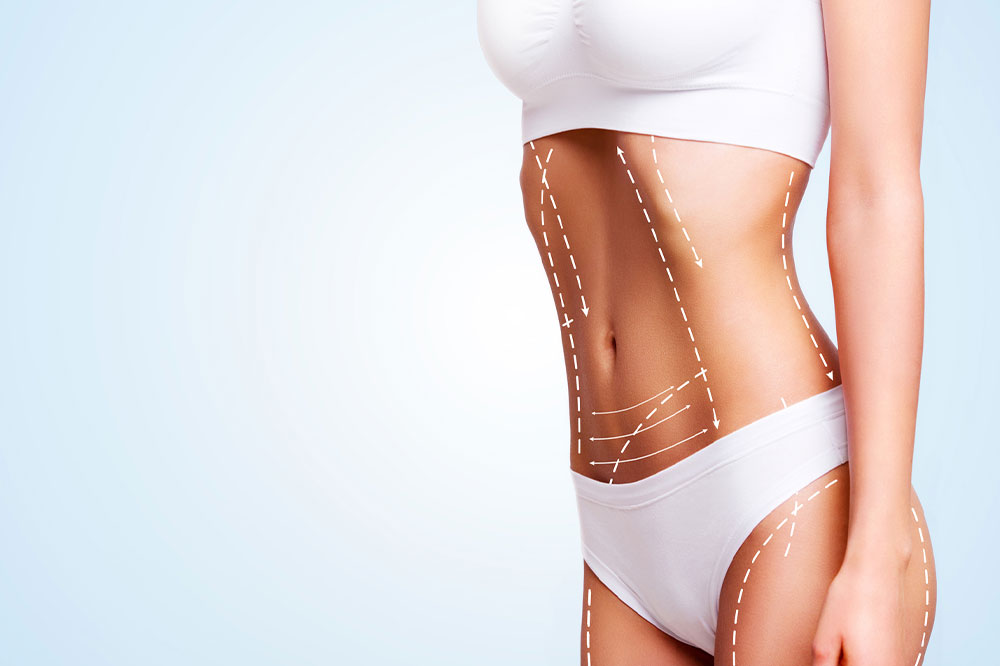Liposuction – Procedure, Benefits, and Cost
Liposuction is a type of cosmetic procedure meant to remove extra fat deposits from the body. People usually seek this procedure when food plans and exercise fail to get rid of stubborn fat in the body. he technique produces a more streamlined body shape. It is frequently used to remove fat cells from the back, neck, chin, upper and lower arms, calves, thighs, and buttocks.

Procedure and its purpose
Liposuction does not remove cellulite, dimples, or stretch marks. It is recommended for people who want to change and improve the shape of their bodies and get rid of stubborn fat. Liposuction permanently removes fat cells, altering the body’s shape. If the patient does not maintain a healthy lifestyle following the procedure, the residual fat cells may grow. The procedure is safe only when a limited amount of fat is targeted. Additionally, it carries risks of infection, numbness, and scarring. The skin may seem lumpy or dented if excessive fat is removed.
As the procedure is cosmetic rather than health-based, it is typically recommended only when lifestyle changes have failed to produce the desired results. It can target and remove fat deposits resistant to calorie restriction and exercise. Liposuction reduces the number of fat cells in specific areas. One should discuss the outcomes and risks of the surgery with their doctor before deciding to proceed. The procedure is mostly chosen to remove fat deposits from the back, buttocks, belly, inner knees, hips, neckline, the area under the chin, thighs, and upper arms.
Benefits
Although a cosmetic procedure, liposuction can help treat certain disorders. Some of these conditions include:
Lymphedema: A chronic disorder in which tissues become swollen due to the accumulation of extra lymph fluid. Swelling is most typically observed in the arms or legs. Liposuction can help reduce swelling, discomfort, and pain.
Gynecomastia: Here, the tissues in men’s breasts can become larger, which liposuction can help remove.
Lipodystrophy syndrome: This refers to fat deposition in one part of the body and loss in another. This procedure can improve appearance by distributing body fat.
What to expect?
Before the surgery, one must undergo several health screenings to ensure they are fit for the procedure. One may have to stop taking regular anti-inflammatory prescriptions at least two weeks before surgery. Women may be asked to discontinue the use of the contraceptive pill. Patients with anemia might be instructed to take iron supplements. Before the surgery, patients may receive general anesthesia that lasts one to four hours. An epidural may be used when undergoing the procedure for the lower body. After the procedure, the surgeon might leave the incisions open to allow the body to expel extra fluid and blood. The results of liposuction won’t be apparent until the inflammation subsides. In some cases, the recovery time could last for months. After roughly four weeks, most of the swelling subsides, and the area where the fat was removed should look less bulky. Those who maintain their body mass usually enjoy the long-lasting benefits of the surgery.
Recovery
During the recovery period, which can take many months, it is important to have healthy foods, stay hydrated, and get plenty of rest to help the body naturally recover. One should hold off on resuming work or going to the gym until fully recovered. The patient can leave the hospital or treatment center the same day with elastic bandages and a supportive compression garment. Unless there is significant fat reduction, one typically wouldn’t have to choose a hospital stay. It is equally important to follow the pre-and post-operative instructions of the plastic surgeon. In the days following surgery, it’s normal to experience some mild discomfort and soreness. The surgeon will recommend painkillers to help with the discomfort. One will be unable to engage in normal activities due to the discomfort and limitations of the garment. They should seek help around the house with chores that require prolonged bending, lifting, or standing.
Costs (in the country and abroad)
Mexico is the most popular location for such procedures, as it is less expensive. The cost of liposuction in Mexico (Tijuana) can be anywhere between $3,800 and $5,750. However, here, the price of the same procedure can range from $4,500 to $12,650. Turkey is also becoming a preferred location for liposuction. It also offers reasonable prices and great results. Liposuction is generally expensive, especially depending on where it is performed. The different surgical techniques influence the cost of full-body liposuction in the country. For instance, a full-body liposuction in Turkey performed manually costs $2,660, whereas a Vaser liposuction costs $3,458.
Risks
Like any major procedure, liposuction carries risks like bleeding and adverse reactions. The following side effects are possible:
- Contour irregularities are caused by unequal fat removal, poor skin suppleness, and atypical healing. These could be long-lasting effects.
- Temporary fluid pockets may develop beneath the skin. It may be necessary to remove the fluid with a needle.
- One may experience numbness in the affected area after the surgery. It is also possible to experience temporary nerve irritation.
- Skin infections are uncommon, but they may develop and cause severe health complications.











